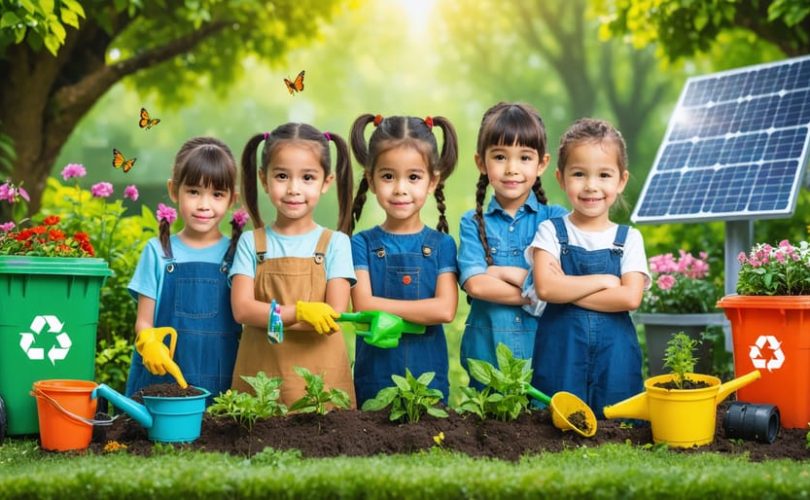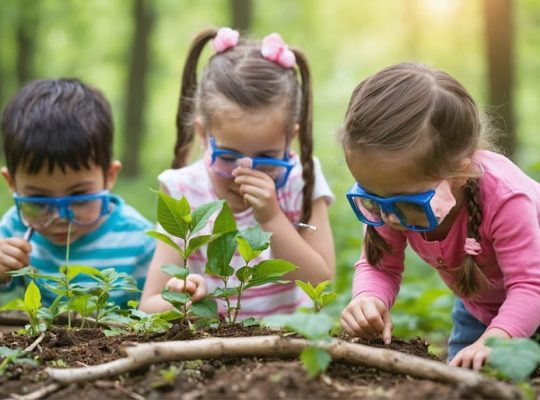When 10-year-old Maya first expressed fear about polar bears dying and rising sea levels, her parents realized they weren’t alone. Across playgrounds, classrooms, and dinner tables, a growing number of children are experiencing eco-anxiety – a profound concern about environmental challenges that can manifest as fear, sadness, or helplessness.
This heightened awareness of climate change and environmental degradation isn’t just affecting adults anymore. Today’s children, armed with unprecedented access to information through social media and school curricula, are processing complex environmental realities at increasingly younger ages. While their concern demonstrates remarkable empathy and understanding, it also presents unique challenges for their emotional well-being.
As parents and educators, we face a delicate balance: nurturing our children’s environmental consciousness while protecting their mental health. Research shows that up to 45% of young people say climate anxiety affects their daily lives, yet this awareness can also be channeled into positive action and hope.
Understanding eco-anxiety in children isn’t about dismissing their very real concerns or shielding them completely from environmental issues. Instead, it’s about providing them with the emotional tools and practical outlets to process these feelings constructively, while maintaining their sense of agency and optimism about the future.
Understanding Eco-Anxiety in Children
Signs Your Child May Be Experiencing Eco-Anxiety
Children express eco-anxiety differently depending on their age and developmental stage. As a parent or caregiver, you might notice various behavioral and emotional changes that could indicate your child is feeling overwhelmed about environmental issues.
In younger children (ages 4-7), common signs include:
– Becoming unusually upset after watching nature documentaries
– Expressing fears about animals becoming extinct
– Having nightmares about natural disasters
– Showing excessive worry about waste and recycling
– Becoming distressed when seeing litter or pollution
For school-age children (ages 8-12), watch for:
– Frequent questions about climate change and its consequences
– Expressing feelings of helplessness about the future
– Increased irritability when discussing environmental topics
– Avoiding outdoor activities due to environmental concerns
– Showing signs of guilt about their environmental impact
Teenagers may demonstrate:
– Intense emotional responses to climate news
– Withdrawal from regular activities due to environmental concerns
– Expression of anger or frustration about environmental inaction
– Difficulty planning for the future
– Symptoms of depression or anxiety when discussing environmental issues
Physical symptoms across all age groups might include:
– Sleep disturbances
– Changes in appetite
– Headaches or stomach aches
– Difficulty concentrating
– Restlessness or fatigue
Remember that some concern about the environment is normal and healthy. However, if these symptoms persist or significantly impact your child’s daily life, it may be time to seek additional support from a mental health professional who understands environmental anxiety in young people.
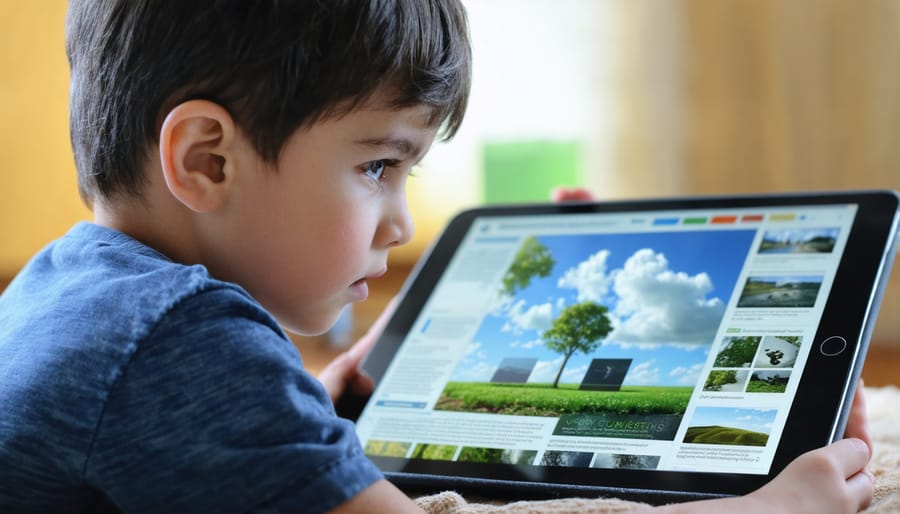
How Media Exposure Influences Environmental Fears
In today’s digital age, children are increasingly exposed to environmental news and information through various media channels. While awareness is important, the constant stream of climate-related content can significantly impact young minds’ emotional well-being.
Social media platforms often amplify environmental concerns through dramatic images and headlines, which can be particularly overwhelming for children who may not have the emotional tools to process this information. Dr. Sarah Chen, a child psychologist, notes: “Children are like sponges – they absorb the emotional weight of environmental news, but often lack the context to understand it fully.”
News coverage of natural disasters, endangered species, and climate change can create a sense of helplessness and fear in young viewers. A recent study found that 70% of children aged 8-16 reported feeling worried after watching news about environmental issues.
However, media exposure isn’t inherently negative. When environmental information is presented appropriately and paired with positive action steps, it can empower rather than frighten children. Educational programs that focus on solutions and highlight successful conservation efforts help balance the negative news children encounter.
Parents and educators can help by:
– Monitoring media consumption
– Discussing environmental news together
– Focusing on age-appropriate content
– Highlighting positive environmental actions
– Creating opportunities for nature connection
– Balancing awareness with hope and action
The Impact on Child Development
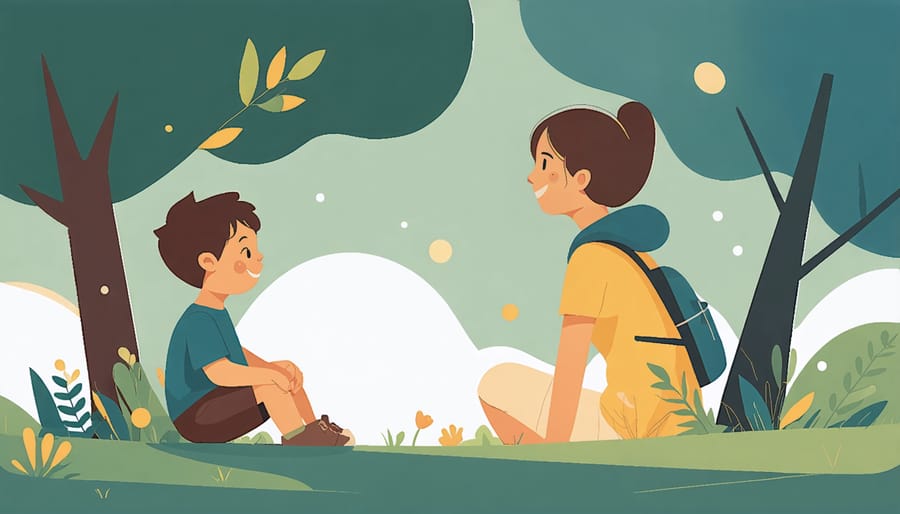
Emotional and Social Development
Children experiencing eco-anxiety often face unique challenges in their emotional and social development. Many parents report that their children struggle with feelings of helplessness and frustration when learning about environmental issues, which can affect their ability to regulate emotions in daily life.
Social relationships may also be impacted as children grapple with these complex feelings. Some become passionate environmental advocates, potentially strengthening bonds with like-minded peers while creating tension with those who may not share their concerns. Others might withdraw from social interactions, feeling overwhelmed by their awareness of environmental challenges.
Dr. Sarah Chen, a child psychologist, notes that “eco-anxiety can significantly influence how children form their identity and view their place in the world.” She emphasizes that while these concerns are valid, they can be channeled into positive action and personal growth when properly supported.
Engaging children in environmental education, particularly through benefits of outdoor education, can help transform anxiety into empowerment. Group activities focused on environmental conservation often provide opportunities for children to develop leadership skills, build resilience, and form meaningful connections with others who share their environmental values.
Parents and educators can support healthy emotional development by acknowledging children’s environmental concerns while helping them maintain perspective and find constructive ways to make a difference in their communities.
Academic Performance and Future Planning
Eco-anxiety can significantly impact a child’s academic performance and their ability to envision their future. Many students report difficulty concentrating on their studies when they’re overwhelmed by environmental concerns. Teachers have noticed increased disengagement, particularly during lessons about climate change and environmental issues.
However, research shows that incorporating outdoor learning environments and environmental education can actually improve student engagement when approached positively. When children feel empowered to make a difference, their academic motivation often increases.
Some children express uncertainty about their future careers and life plans due to environmental concerns. They might question traditional career paths or feel conflicted about their aspirations. Parents and educators can help by acknowledging these feelings while highlighting opportunities in environmental science, sustainable technology, and other forward-thinking fields that contribute to solutions.
The key is to balance environmental awareness with hope and agency. When children understand they can be part of positive change, they’re more likely to maintain academic focus and develop optimistic future goals.
Supporting Children Through Environmental Concerns
Age-Appropriate Environmental Education
When discussing environmental challenges with children, it’s essential to balance awareness with hope and empowerment. Start by gauging your child’s current understanding and emotional response to environmental issues. Young children might benefit from simple conversations about connecting with nature and basic conservation, while older kids can handle more complex discussions about environmental challenges.
Focus on positive actions and solutions rather than dwelling on problems. For example, involve children in household recycling, gardening, or local clean-up initiatives. This hands-on approach helps them feel they’re making a difference while learning about environmental stewardship.
Create age-appropriate learning opportunities through stories, games, and activities that celebrate nature rather than emphasize environmental threats. When children express worry about environmental issues, acknowledge their feelings while highlighting positive changes happening in the world, such as renewable energy adoption and conservation success stories.
Remember to model sustainable behaviors and maintain an optimistic outlook. This approach helps children develop environmental awareness while feeling capable and hopeful about the future.
Empowering Actions and Positive Engagement
Empowering children to take positive action is crucial in managing eco-anxiety. Engaging in nature-based learning activities can help children feel more connected to the environment while developing problem-solving skills. Start small by creating a family recycling station or growing herbs in a windowsill garden. These tangible activities give children a sense of agency and accomplishment.
Encourage children to join environmental clubs at school or participate in community clean-up events. Working alongside peers who share similar concerns can transform anxiety into purposeful action. Simple projects like creating artwork from recycled materials or starting a compost bin teach children that their individual actions matter.
Remember to celebrate small victories and acknowledge their efforts. When children see the positive impact of their actions, whether it’s reducing household waste or helping local wildlife, they develop resilience and hope. Focus on age-appropriate activities that foster a sense of capability rather than overwhelming responsibility.
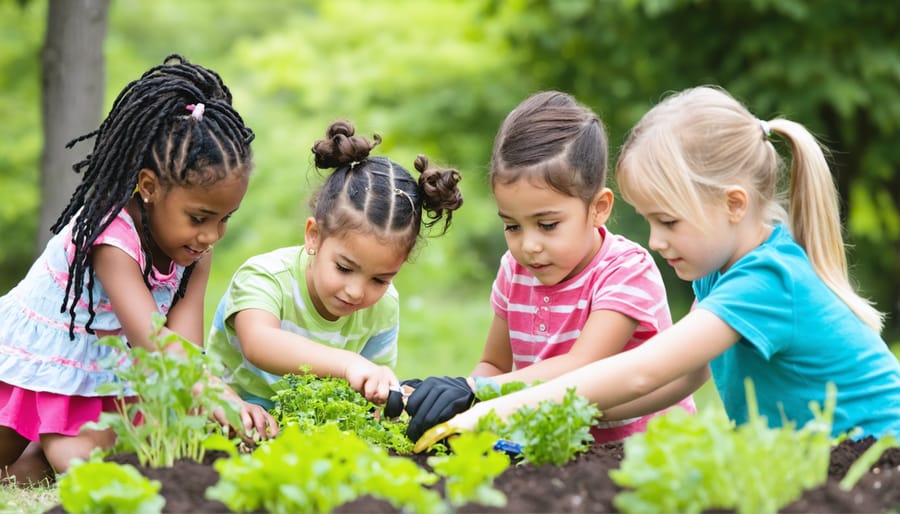
While eco-anxiety presents real challenges for children and families, there are many reasons to remain hopeful about our collective future. By acknowledging and addressing these feelings openly, we can help young people develop resilience and channel their environmental concerns into positive action. Parents, educators, and mental health professionals all play crucial roles in supporting children through these challenging emotions while fostering their natural desire to protect our planet.
Remember that children are remarkably adaptable and resourceful when given proper support and guidance. By combining emotional validation with practical environmental education and opportunities for positive action, we can help transform anxiety into empowerment. Communities worldwide are already demonstrating how young people’s passion for environmental causes can create meaningful change.
The key is finding the right balance: acknowledging the reality of environmental challenges while emphasizing hope, action, and connection. When we work together to support our children’s emotional well-being while encouraging their environmental awareness, we help create a generation that is both mentally resilient and environmentally conscious. This balanced approach will serve them well as they become tomorrow’s environmental stewards and problem-solvers.

